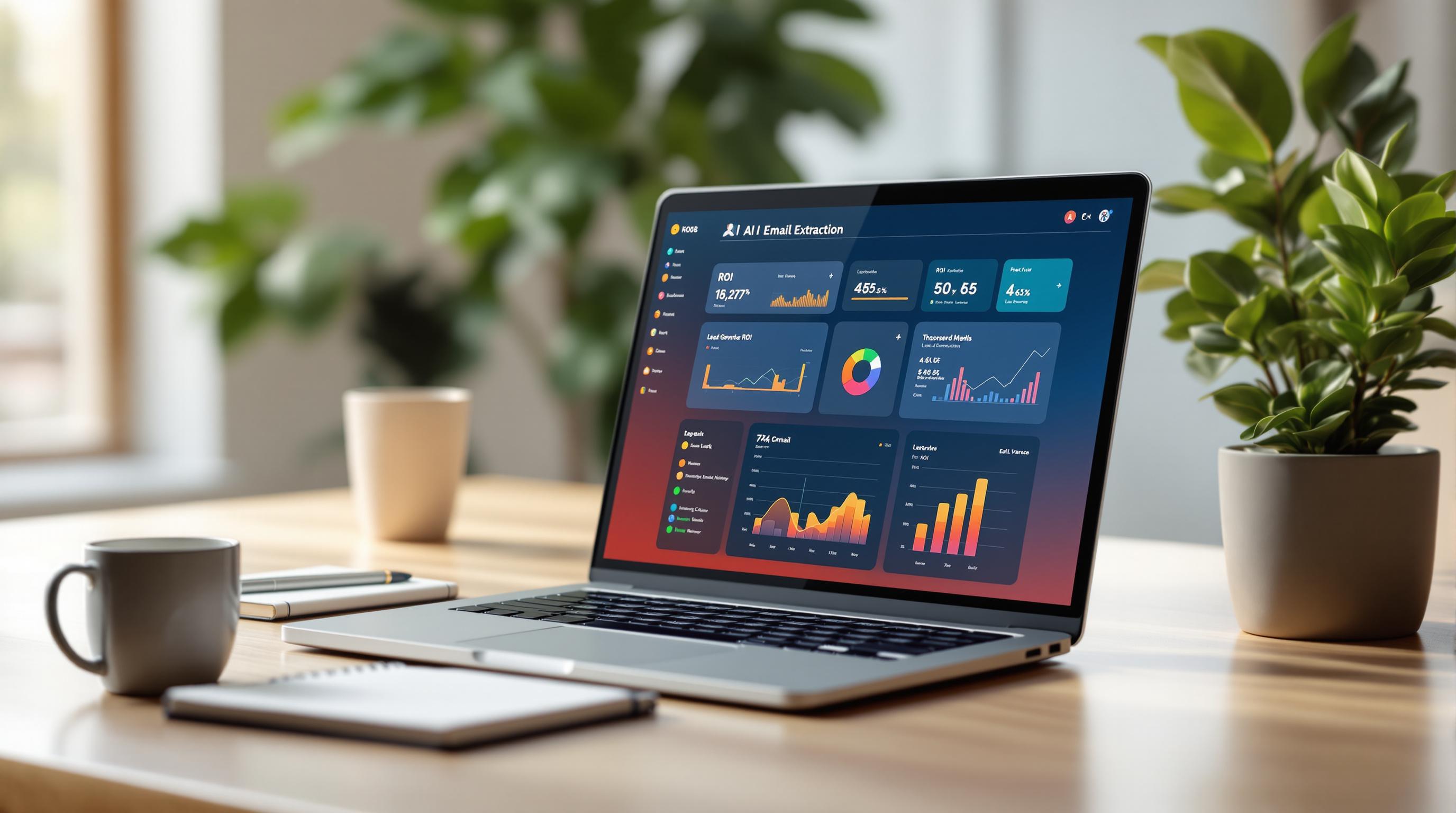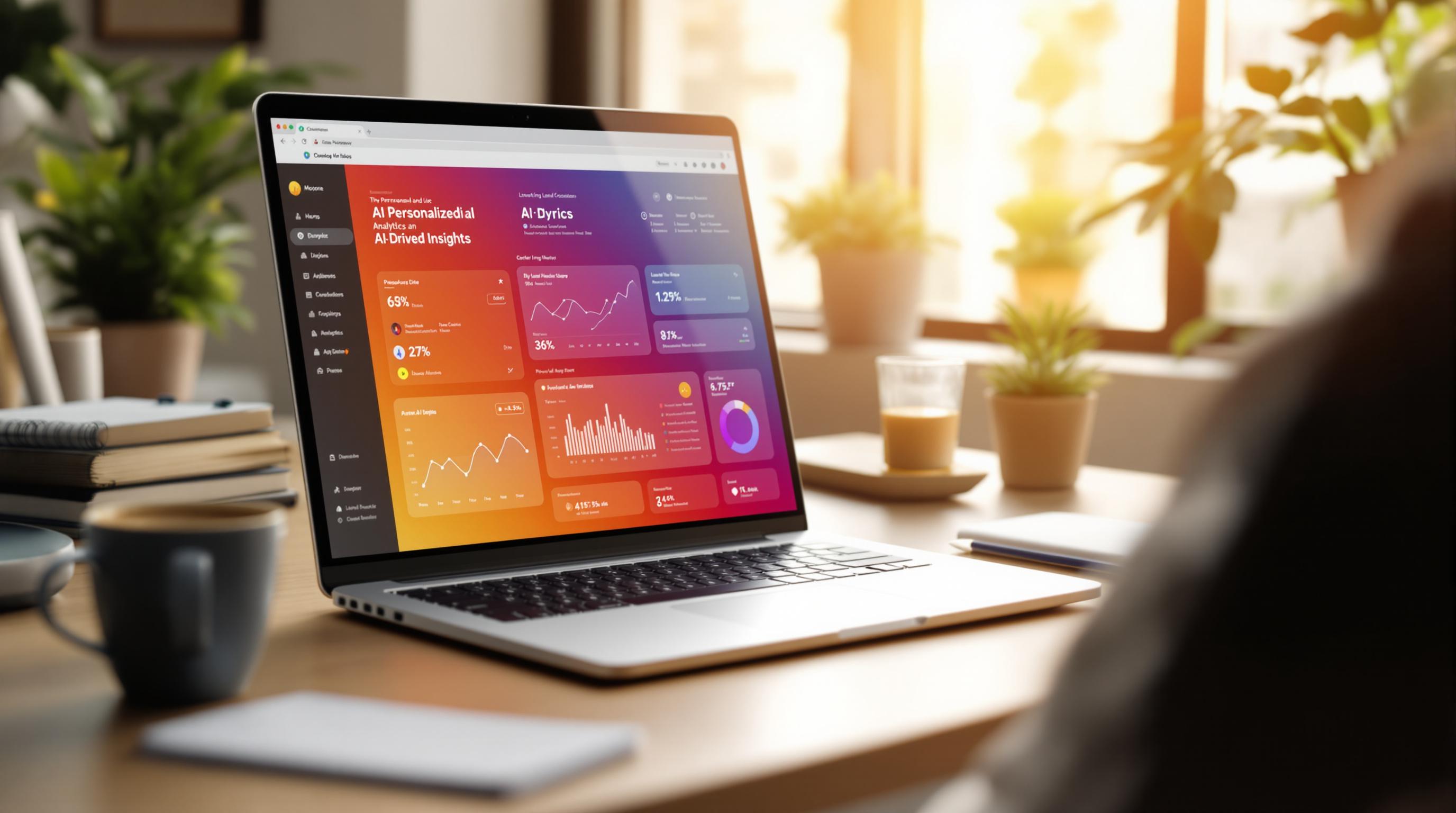Want better results from your cold email campaigns? A/B testing is your go-to method. By tweaking and testing elements like subject lines, CTAs, and email timing, you can improve performance across these 7 key metrics:
- Open Rate: Test subject lines, sender names, and timing to grab attention. Aim for 20-25%.
- Click-Through Rate (CTR): Experiment with CTA styles, content length, and link placement. A decent CTR is 2-5%.
- Reply Rate: Optimize email length, personalization, and structure to increase responses (1-2% is typical).
- Conversion Rate: Focus on CTAs, offer presentation, and trust signals to drive actions (2-5% is solid).
- Bounce Rate: Keep it below 5% by using verified email lists and optimizing sender details.
- Unsubscribe Rate: Test content relevance, subject lines, and sending frequency to stay below 1%.
- Spam Complaint Rate: Maintain trust with clear subject lines, personalization, and clean email lists (under 0.1%).
Pro Tip: Test one variable at a time, track results consistently, and use a sample size of 100-200 prospects per variation for reliable insights.
1. Open Rate
The open rate tells you the percentage of people who open your cold emails. It’s a great way to see if your subject lines and sender names are grabbing attention. Did you know that 47% of recipients decide to open emails based solely on the subject line? [2] That’s why crafting the right subject line is so important.
How to Test Open Rates
Here are some elements to experiment with to improve your open rates:
- Subject Lines: Try different approaches, like “Introducing Our New Product” versus “Get Exclusive Access,” to see which style connects better.
- Timing: Experiment with sending emails on different days and times. Research suggests Tuesday might be a strong option [1].
- Sender Names: Test whether emails from a personal name, a company name, or a mix of both perform better in building trust.
Pro Tips for Testing
Focus on testing one thing at a time. Use a sample size of 100-200 prospects for each variation, and make sure to analyze the results carefully [2]. Industry averages for open rates tend to fall between 20-25% [2], but with the right tweaks, you can aim higher.
While open rates show how many people are interested enough to open your email, the next step is looking at click-through rates to measure real engagement.
2. Click-Through Rate (CTR)
Click-through rate (CTR) tells you the percentage of people who clicked on links in your cold email. It’s a great way to gauge how engaging your email content and call-to-action (CTA) are at encouraging interaction.
What to Test for Better CTR
Here’s what you can experiment with to boost your click rates:
-
CTA and Design Tweaks
- Play around with CTA formats like button color, size, or placement.
- Compare text-based CTAs with button-based ones.
- Try out different layouts and content structures to see what resonates.
-
Content and Link Placement
- Test short paragraphs versus bullet points to see which keeps readers engaged.
- Adjust content length - short and snappy or more detailed?
- Compare using just one link versus multiple links throughout the email.
- Experiment with inline text links versus standalone CTAs.
| Element to Test | Version A | Version B |
|---|---|---|
| CTA Style | Bold, red button | Simple blue text link |
| Content Length | Short (150 words) | Detailed (300 words) |
| Link Placement | Single CTA at bottom | Multiple inline links |
Tips for Better CTR Testing
A CTR between 2-5% is considered decent for cold emails, though it can vary depending on the industry [2]. Keep an eye on CTR alongside other metrics like open and reply rates to get a fuller picture of your campaign’s performance. And make sure to validate any improvements with statistical tools to confirm the results aren’t just random.
Pro Tip: Boosting CTR isn’t just about clicks - it’s about driving meaningful actions that move your campaign forward.
Once you’ve optimized your CTR, the next step is to focus on how many recipients actually respond, which brings us to reply rates.
3. Reply Rate
Reply rate shows the percentage of recipients who respond to your cold email campaign. It’s a clear way to measure how well your message connects with your audience. While open rates highlight initial interest and click-through rates (CTR) track engagement, reply rates tell you if your email actually sparked a conversation.
What’s a Good Reply Rate?
For cold emails, reply rates usually range from 1-2%, though this can vary by industry [2]. Instead of chasing arbitrary benchmarks, focus on consistent improvements through A/B testing.
Here are a few elements you can test to boost reply rates:
- Subject lines: Try questions versus statements to see what gets more responses.
- Email length: Compare short, to-the-point emails with more detailed ones.
- CTA placement: Test single asks versus multiple touchpoints.
- Personalization: Experiment with basic personalization (like {name}) versus detailed, industry-specific customization.
Advanced Testing Strategies
To refine your cold email campaigns, dive deeper into these strategies:
- Message Structure: Play around with formats. For example, test short, direct pitches against longer emails that focus on delivering value.
- Personalization Depth: See how basic personalization stacks up against highly tailored messaging to find the right balance for your audience.
Testing Best Practices
For reliable results:
- Test one variable at a time to pinpoint what’s driving changes.
- Use consistent sample sizes and give tests enough time to identify patterns.
- Track not just the number of replies but also the quality - are the responses meaningful?
Pro Tip: Focus on creating genuine conversations instead of just chasing higher response rates. In cold email campaigns, the quality of replies often outweighs sheer volume.
While reply rates highlight engagement through responses, diving into conversion rates will reveal how these conversations impact your broader goals.
4. Conversion Rate
Conversion rate tracks the percentage of recipients who take the action you want - like booking a meeting or making a purchase.
What Defines a Good Conversion Rate?
For cold emails, a conversion rate between 2% and 5% is often considered solid, though this depends on your industry and the type of offer you're promoting [2]. The goal is to keep improving through consistent A/B testing.
Ways to Test for Better Conversions
Experiment with key elements like:
- CTA wording: Try "Schedule a Meeting" versus "Learn More."
- Offer presentation: Compare approaches like problem-solution versus benefit-first.
- Trust signals: Test different ways to build credibility and see what resonates most with your audience.
Advanced Testing Ideas
1. Segment your audience: Tailor your messaging to specific groups for better results.
2. Analyze related metrics: Look at open rates, click-through rates (CTR), and test email timing to pinpoint where conversions drop off.
Best Practices for Testing
- Test with at least 100-200 prospects per variation to ensure reliable data [2].
- Give tests enough time and maintain consistent sample sizes for accuracy.
- Focus on one variable at a time to avoid mixed results caused by external factors.
Improving your conversion rate doesn’t just lead to better immediate outcomes - it also sharpens your approach for future campaigns. Use each test to gather actionable insights and refine your strategy.
Once your conversion rate is optimized, the next step is tackling bounce rates to make sure your emails actually land in recipients’ inboxes.
5. Bounce Rate
Bounce rate refers to the percentage of emails that fail to reach recipients due to delivery issues. A high bounce rate not only wastes your outreach efforts but also harms your sender reputation, making it harder to get future emails delivered. If your bounce rate exceeds 5%, it’s time to act. Anything over 10% could lead to email service providers blocking your campaigns [2].
How to Reduce Bounce Rates with A/B Testing
-
Sender Information
Experiment with sender names and email addresses to ensure they pass spam filters and build trust with recipients. Use authentication protocols like SPF and DKIM to boost credibility. Testing whether personal email addresses perform better than domain-based ones can be insightful - emails from personal names often see bounce rates drop by 2-3%. -
Email Content Structure
Compare plain text emails with those that rely heavily on HTML. Plain text emails often result in fewer bounces. Make sure your emails are mobile-friendly and test different formatting styles to see what works best.
Key Tips for Testing
Regularly track bounce rates and keep your email list up-to-date by removing invalid addresses. Use email verification tools to clean your list before sending campaigns. A/B testing can help you identify which elements - like sender details or content structure - improve your email deliverability.
Smart Testing Strategies
Segment your audience based on engagement levels to test tailored messages and see what resonates. Combining authentication protocols like SPF and DKIM can lower bounce rates by 4-5% [2].
Reducing bounce rates is essential for ensuring your emails land in inboxes. But don’t stop there - keep an eye on unsubscribe rates to gauge how well your messaging connects with your audience.
sbb-itb-8abf799
6. Unsubscribe Rate
The unsubscribe rate measures how engaged your audience is and directly impacts your sender reputation. Ideally, this rate should stay below 1%. If it goes higher, it's a clear sign to revisit and tweak your email strategy, possibly through A/B testing.
Key Elements to Test
-
Subject Line and Content Alignment
Ensure your subject lines match what your audience is looking for. Misalignment can lead to higher unsubscribes. Play around with content structure - try different placements for key points or adjust the length. Also, test how much personalization works best for your audience. -
Content Relevance
Experiment with where you position your value proposition. Adjust the length of your emails to see what resonates most. Fine-tune personalization to strike the right balance between generic and overly specific. -
Sending Frequency
Test how often you send emails. Too many can drive people away, while too few might lose their attention. Monitor how unsubscribe rates change based on the timing and frequency of your follow-ups.
Testing Strategy Best Practices
Run tests on a large enough sample to ensure your findings are reliable. Keep an eye on results across several campaigns to spot consistent patterns.
Here’s a simple framework for testing unsubscribe rates:
| Element to Test | Test Version A | Test Version B | Metric to Measure |
|---|---|---|---|
| Subject Line | Benefit-driven | Question-based | 24h unsubscribe rate |
| Email Length | Under 100 words | 200-300 words | Content length impact |
| Send Time | Morning (9-11 AM) | Afternoon (2-4 PM) | Time-based trends |
Critical Considerations
Make sure you're targeting the right people. Use tools to clean your email list by removing inactive subscribers and segmenting your audience effectively. This not only reduces unsubscribes but also boosts overall engagement.
7. Spam Complaint Rate
The spam complaint rate shows how many recipients mark your cold emails as spam. Keeping this rate under 0.1% is essential for protecting your sender reputation and ensuring your emails actually reach inboxes.
A high spam complaint rate can hurt your campaigns in several ways: lower inbox placement, restrictions from email providers, or even blacklisting.
A/B Testing to Lower Spam Complaints
| Element | Version A | Version B | What to Monitor |
|---|---|---|---|
| Email Format | Plain Text | Light HTML | Spam rate |
| Sender Name | Personal Name | Company Name | Trust signals |
| Subject Line | Direct Benefit | Question-Based | Initial reaction |
| Content Length | 50-100 words | 150-200 words | Engagement levels |
What to Focus On
Certain elements are more likely to trigger spam complaints. Start by testing subject lines, as they play a big role in whether recipients flag your email as spam.
Improving Content:
- Experiment with personalization, tone (formal vs. conversational), and how you present value in your email.
- Adjust where and how you place your call-to-action (CTA) to minimize complaints.
Managing Your Email List
Using high-quality email lists can significantly lower spam complaints. Tools powered by AI can help verify email addresses and segment your list based on recipient engagement.
Tracking and Adjusting
Keep a close eye on your spam rates and analyze any spikes. Look for patterns - like specific subject lines or formats - and tweak your strategy accordingly.
Tools for Cold Email Success
AI-powered tools have made cold email campaigns much easier by simplifying tasks like data collection and analysis.
Key Tool Categories
| Tool Type | Primary Function | Features to Consider |
|---|---|---|
| Email Extraction | Lead Generation | Ability to handle split testing |
| A/B Testing Tools | Campaign Performance | Statistical tracking, variant analysis |
| Analytics Software | Performance Insights | Real-time data, custom reports |
| Email Automation | Campaign Management | Scheduling, personalization, sequences |
Email extraction tools are especially important for building accurate lead lists, setting the stage for effective campaign testing.
AI-Powered Email Collection
Tools like the Email Extractor Tool can automatically gather email addresses from websites. This makes it easier to access quality leads, which can significantly improve the results of A/B testing efforts.
Seamless Integration
When picking tools for A/B testing, look for ones that integrate well with your email platforms. This ensures smooth data sharing between your email extraction, testing, and analytics tools, making the process more efficient.
Tracking and Analytics
Performance tracking is essential. Use analytics software with features like real-time monitoring, advanced filtering, and automated reporting. These tools help you measure key metrics and refine your campaigns.
Managing Your Data
Clean and well-organized contact data is a must for larger campaigns. Look for tools with features such as:
- Automated email verification
- Duplicate detection
- Export options in formats like CSV or TXT
- Contact segmentation for better targeting
Pick tools that fit your campaign size and provide actionable data to keep your efforts on track.
A/B Testing for Better Cold Email Campaigns
A/B testing plays a key role in building cold email campaigns that get results. By tracking seven important metrics, you can make smarter, data-backed decisions to improve your outreach.
Each metric - like open rates, click-through rates, and reply rates - offers a different perspective on how your emails are performing. Open rates and reply rates tell you how engaging your content is, while conversion rates measure how well your emails achieve business goals. Keeping an eye on bounce rates, unsubscribe rates, and spam complaints ensures your sender reputation stays intact.
Here’s how to get the most out of your A/B testing:
- Focus on one variable at a time to avoid confusion and get clear insights.
- Test with 100-200 prospects per variant for dependable data.
- Track your results regularly to adapt to changes in audience behavior.
AI tools can simplify the process by automating tasks like lead collection and performance analysis. Combining a structured approach with smart tools ensures your cold email campaigns keep improving. Each test builds on the last, helping you refine your strategy for even better outcomes.
FAQs
What metrics do you track to measure the success of a cold email campaign?
Tracking the right metrics is crucial for evaluating a cold email campaign. Key performance indicators include open rates, reply rates, click-through rates (CTR), and conversion rates. Additionally, keeping an eye on email health metrics like bounce rates, unsubscribe rates, and spam complaints is important. For more details on each metric and how to improve them, check the related sections above.
How to A/B test cold emails?
A/B testing cold emails helps you figure out what works best for your audience. Here's how to do it:
Steps to Follow:
- Focus on testing one variable at a time.
- Split your audience into equal-sized groups.
- Send different versions of the email at the same time.
What You Can Test:
- Subject lines
- Content in the email body
- Call-to-action (CTA) buttons
- Personalization details
- Sender names
For reliable insights, aim to test with 100-200 prospects per version [2]. This method helps identify what connects with your audience and guides future adjustments.



